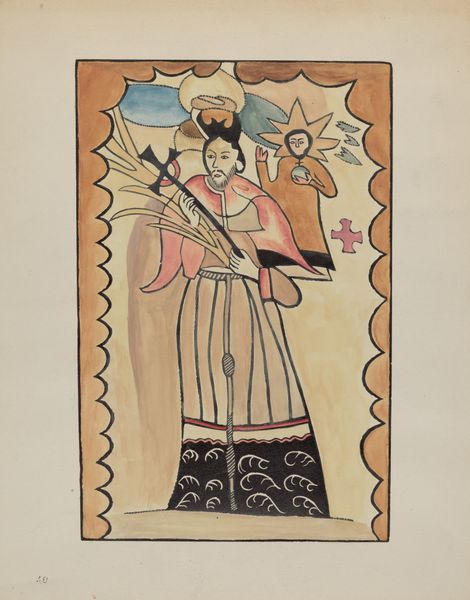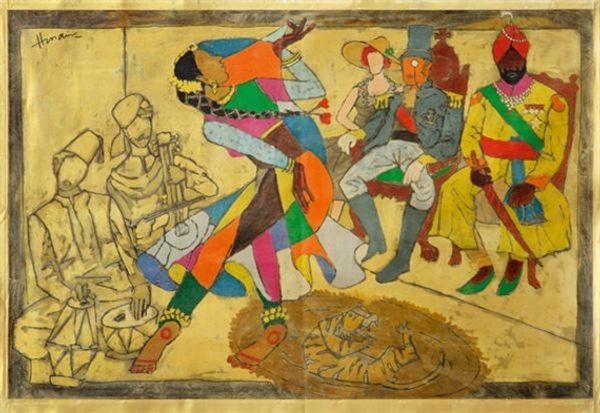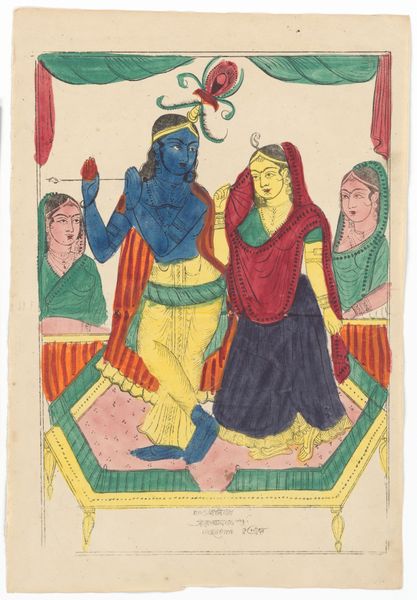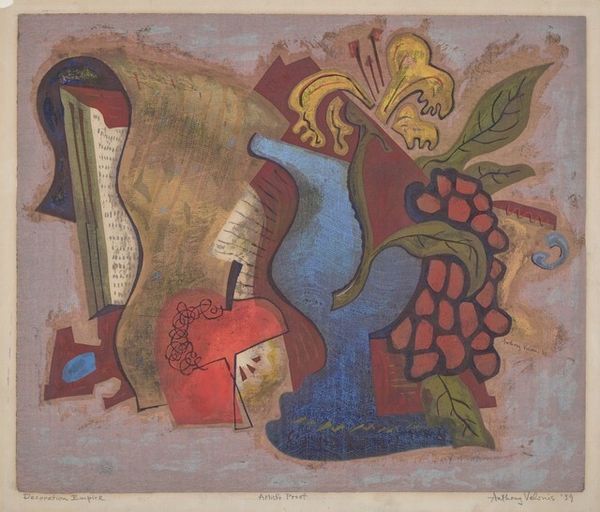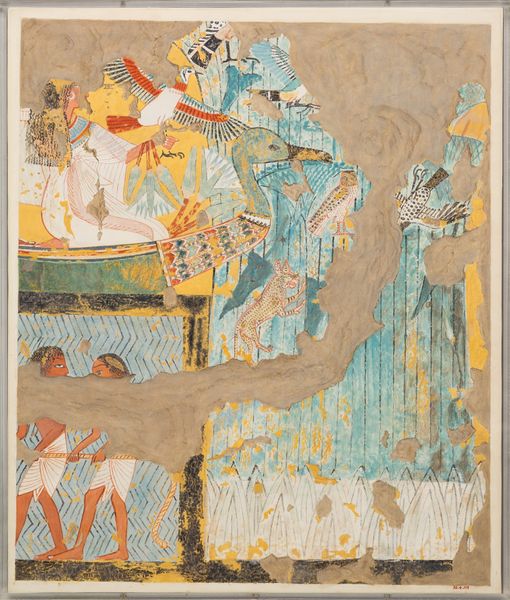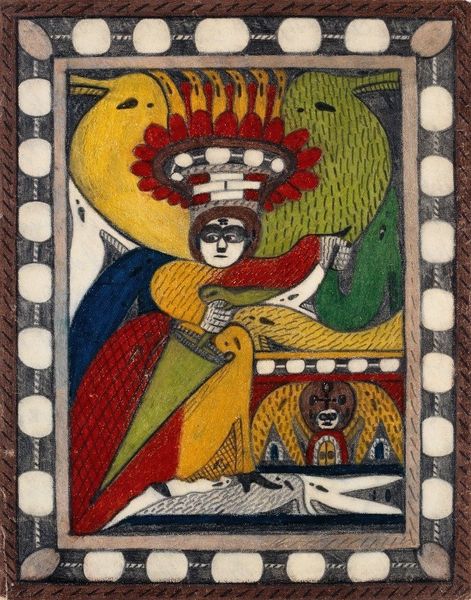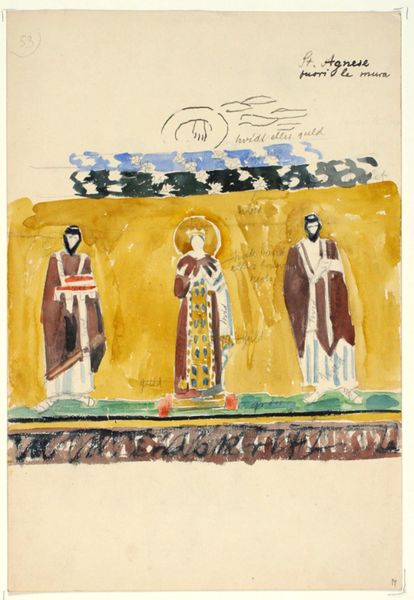
drawing, paper, watercolor, pen
#
portrait
#
drawing
#
water colours
#
narrative-art
#
figuration
#
paper
#
watercolor
#
romanticism
#
pen
#
genre-painting
Dimensions: sight size: 38.1 x 31.3 cm (15 x 12 5/16 in.) framed: 48.9 x 42.2 cm (19 1/4 x 16 5/8 in.)
Copyright: National Gallery of Art: CC0 1.0
Curator: This is Mary Ann Willson’s "The Prodigal Son Wasted His Substance," made around 1815, with watercolor, pen, and ink on paper. What strikes you first? Editor: It's the raw, almost folk-art style, and the somewhat stiff figures. They’re celebrating, I guess, but there’s a flatness, a naiveté to it. How do you interpret this work? Curator: I see a powerful statement on early American social life and gender. Willson, living in a documented same-sex relationship with Miss Brundage, created this piece likely using handmade pigments and thorn for a pen, indicating a marginalized existence. Editor: Marginalized? How so? Curator: Well, consider the social context. In early 19th century America, women artists, let alone those in unconventional relationships, were largely excluded from the mainstream art world. The Biblical tale of the Prodigal Son here reads as critique of social norms and expectations imposed upon individuals, especially women. It pushes back against societal judgment of "improper" relationships. Editor: So, the "wasteful living" isn't just about the Biblical story but also a coded commentary on societal perceptions? Curator: Precisely. What’s “wasteful” in the eyes of society may, for Willson, represent authentic self-expression. The work becomes a subversive act, a claiming of space and narrative control. How might Willson and Brundage have found or made space for themselves? What alternative economies did they have to build? Editor: That reframes everything. I initially saw it as just a quaint, if clumsy, illustration, but knowing the context of Willson's life makes it a radical assertion. Curator: Indeed. And a vital reminder that art history is as much about uncovering silenced voices as it is about celebrating established canons. Editor: Absolutely. This piece highlights the importance of considering artists' lived experiences in our interpretations. Thanks!
Comments
No comments
Be the first to comment and join the conversation on the ultimate creative platform.

